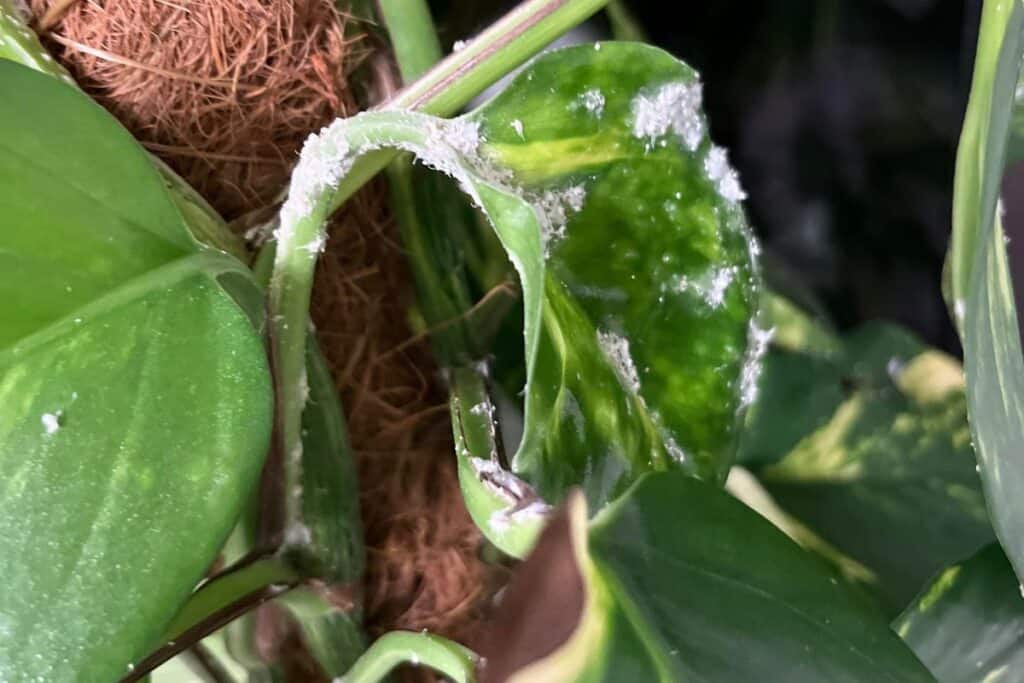Mealybugs are sneaky sap-suckers that love hiding in leaf joints and under foliage. Learn how to identify, treat, and prevent mealybug infestations.
👀 What Are Mealybugs and Why They’re a Problem
Mealybugs are soft-bodied, white insects that look like tiny tufts of cotton. They feed on plant sap, weakening your plant and leaving behind sticky honeydew that attracts mold and ants. They love hiding in leaf joints, undersides, and crevices, making them hard to spot until damage is visible.

🔍 How to Spot Mealybugs Early
Early detection is key to saving your plant. Here’s what to look for:
- White, cottony clusters in leaf joints or on stems
- Sticky residue on leaves or nearby surfaces
- Yellowing or curling leaves from sap loss
- Ants crawling on your plant—they’re attracted to mealybug honeydew
🧴 Mealybug Treatment Options That Work
1. Diluted Alcohol Spray (1:3 ratio with water)
- Dissolves mealybug wax coating and kills on contact
- Safer for sensitive foliage when diluted
- Spray under leaves and into crevices
- Test on one leaf first to avoid burn
Alt Text Suggestion:
Spray bottle misting the underside and stem joint of a calathea leaf with diluted alcohol.
2. Cotton Swab + Alcohol (Full Strength)
- Dab directly onto visible mealybugs
- Ideal for small infestations or delicate plants
- Follow up with a gentle rinse after 15–30 minutes
3. Neem Oil or Insecticidal Soap
- Smothers mealybugs and disrupts their life cycle
- Offers residual protection
- Apply in the evening and wipe excess after a few hours
- Safe for Calathea, Maranta, and other sensitive plants when diluted properly
🧠 Pro Tip:
Mealybugs love hiding in stem joints and leaf undersides. Tilt your plant and spray upward to reach their favorite spots.

🧼 Bonus Tactics for Persistent Infestations
- Manual removal: Use a soft brush or cloth to wipe off clusters
- Rinse thoroughly: A gentle shower can dislodge hidden bugs
- Repeat treatments every 5–7 days until no signs remain
- Isolate infected plants to prevent spread
🚫 How to Prevent Mealybugs Long-Term
- Inspect new plants before bringing them indoors
- Quarantine for 1–2 weeks
- Avoid overwatering and overfertilizing—mealybugs thrive in lush, soft growth
- Improve airflow and reduce humidity around vulnerable plants
- Wipe down pots and saucers—mealybugs can hide there too
🌱 Final Thoughts
Mealybugs may look harmless, but they’re relentless. With consistent care, targeted treatments, and smart prevention, you can protect your indoor jungle.
